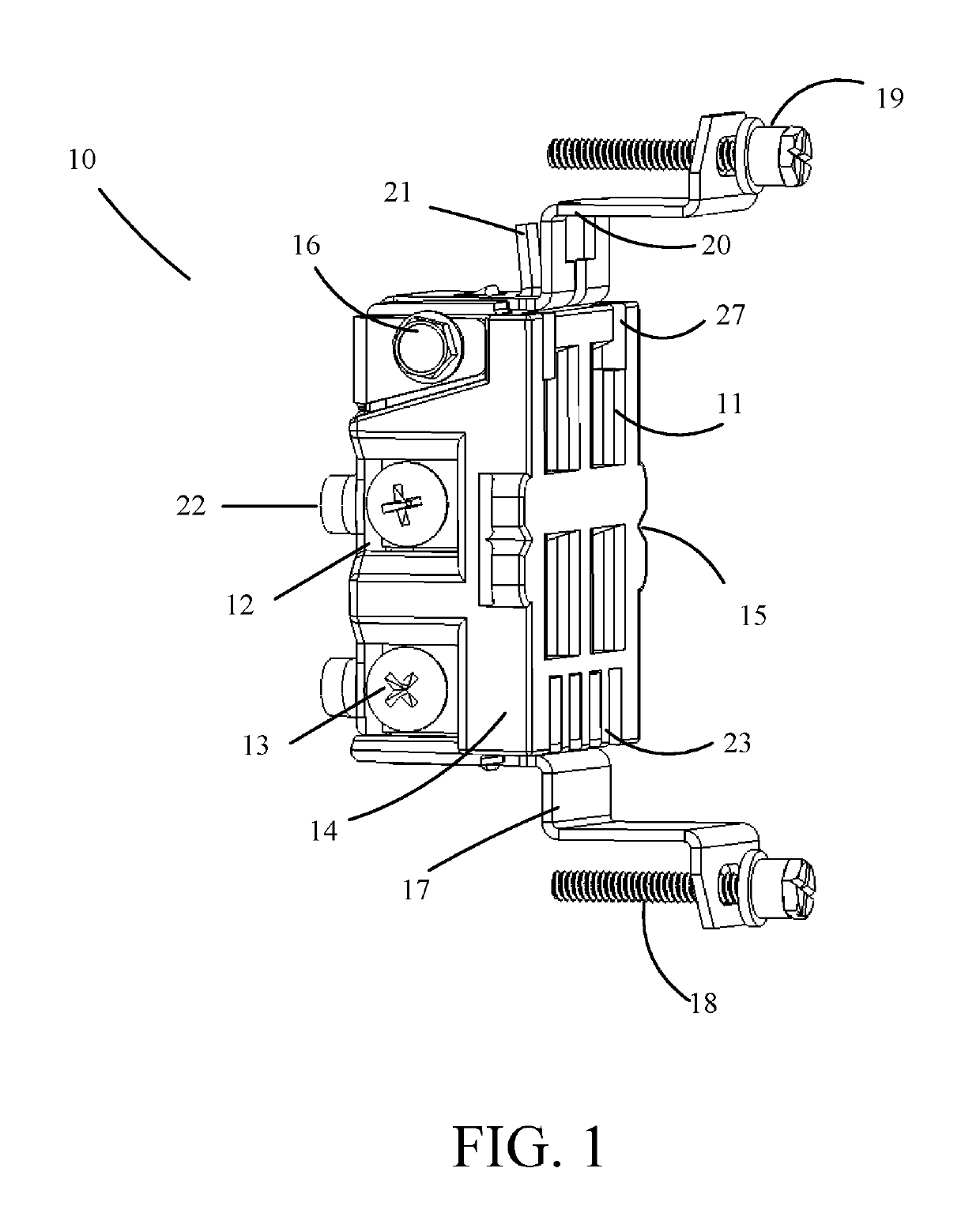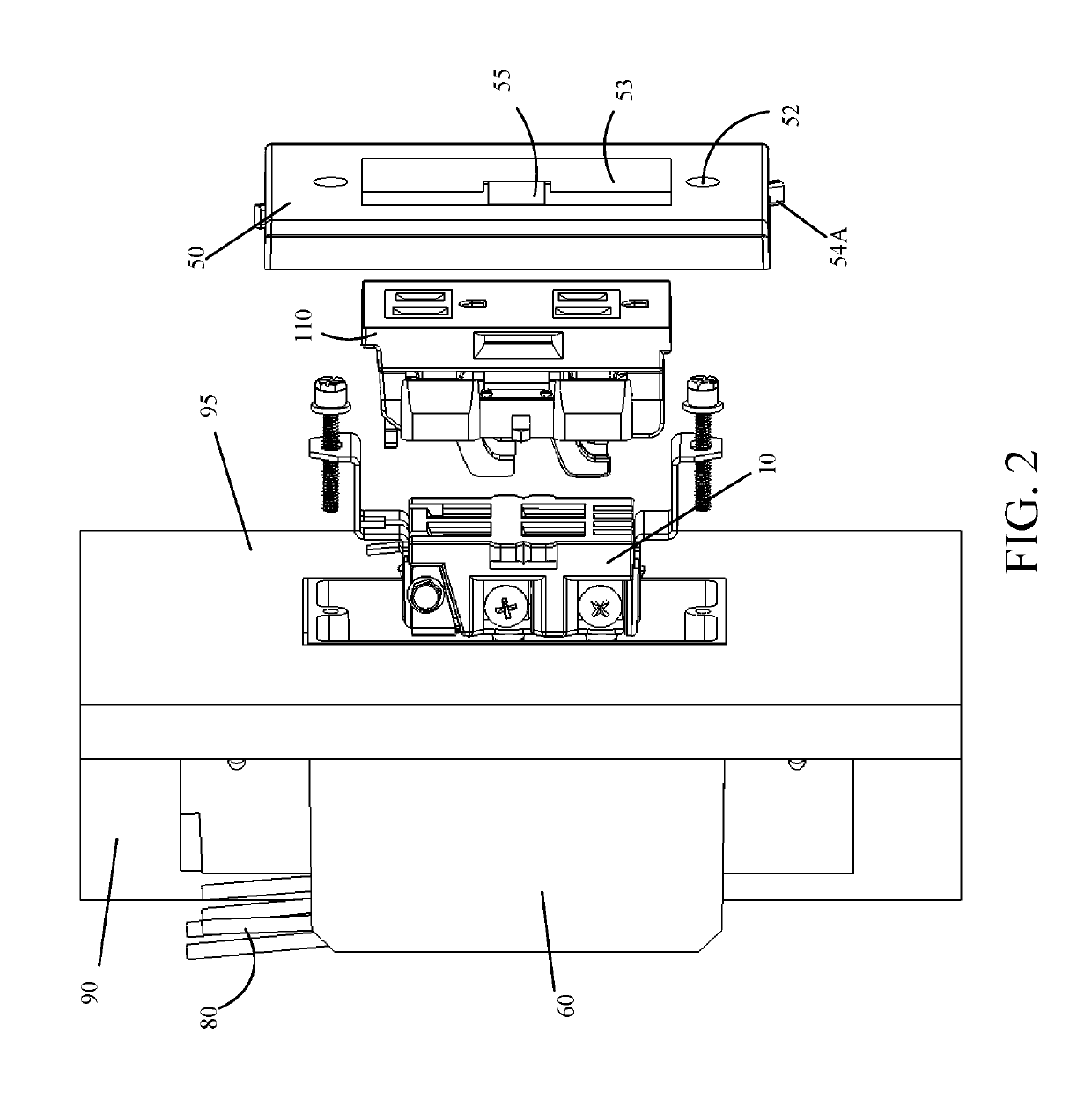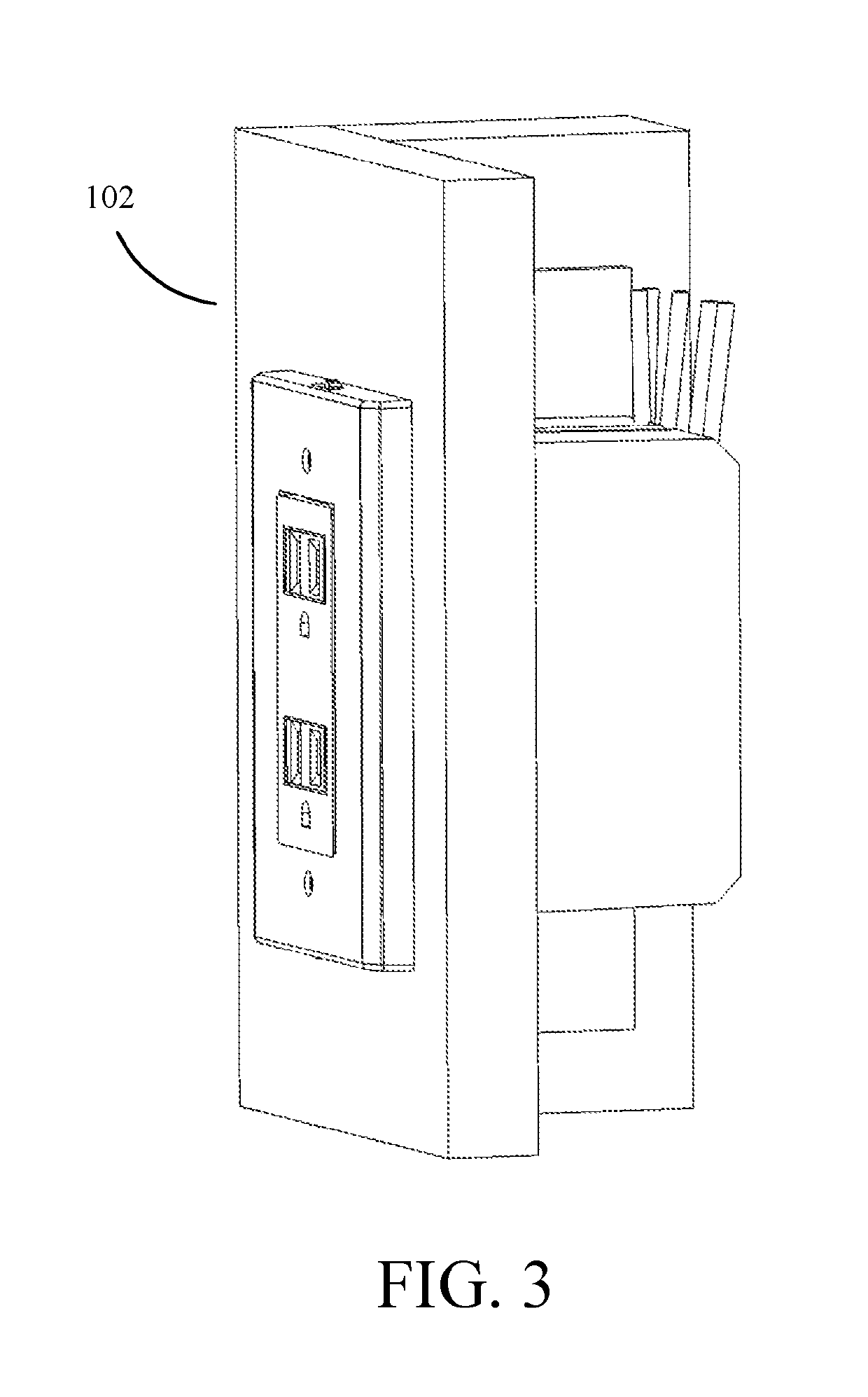Unifying electrical interface connection platform
a technology of electrical interface and connection platform, which is applied in the direction of coupling device connection, transportation and packaging, sustainable buildings, etc., can solve the problems of foolproof implementation of the system, inability to function properly or permissibly, and inserting a 250v hook-on outlet to i
- Summary
- Abstract
- Description
- Claims
- Application Information
AI Technical Summary
Benefits of technology
Problems solved by technology
Method used
Image
Examples
Embodiment Construction
[0067]While connectivity to a power grid may take many forms, the adaptations found in this invention may be construed as one of many embodiments. Many similar approaches may be derived from this that will not be covered in this application but will, regardless, represent the intent of this patent to unify the world's electrical standards. The platform to be described in this preferred embodiment will exhibit many elements that when taken together will be found to be essential to explain the design intent.
[0068]At its base, the Unifying Electrical Interface (UEI)10 takes the shape of a multi-channel hook-on outlet that provides pathways to either a single mode connectivity or a combination thereof. Instead of being a singular source of power, it will allow the choice for a wider selection of voltages and type while making it possible to conserve energy and reduce the cost of operation.
[0069]As illustrated in FIG. 1, the Unifying Electrical Interface (UEI) 10, the basic platform at t...
PUM
 Login to View More
Login to View More Abstract
Description
Claims
Application Information
 Login to View More
Login to View More - R&D
- Intellectual Property
- Life Sciences
- Materials
- Tech Scout
- Unparalleled Data Quality
- Higher Quality Content
- 60% Fewer Hallucinations
Browse by: Latest US Patents, China's latest patents, Technical Efficacy Thesaurus, Application Domain, Technology Topic, Popular Technical Reports.
© 2025 PatSnap. All rights reserved.Legal|Privacy policy|Modern Slavery Act Transparency Statement|Sitemap|About US| Contact US: help@patsnap.com



